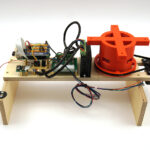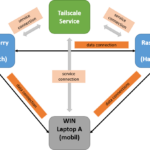After defining the sections you can start to create a first draft of the table of contents. I recommend to use the “Quick styles” in word that you can find in the section “Home”. Therewith you can define headlines and an automatic table of contents can be created.
Definition of „Quick styles“
Quick styles are used to format recurring text elements in the same way. Furthermore headlines can be differentiated from usual text elements to create an automatic table of contents. That means that for each text element that needs a different format (font, fontsize, bullets, numbering) a quick style has to be created. The most common styles are: Headlines 1 to n (depending on the necessary subdivision), main text, caption, citation, etc..
At the beginning it is a little bit exhausting to create all the styles but it will save you a lot of time afterwards. To create a new style sheet you write a sentence into the word document in order to format it with your individual demands (font, font size, line spacing etc.). To save it as a “Quick style” highlight the sentence, make a right mouseclick and choose “Styles” so that you can “Save the Selection as a new Quick Style”
Creating an automatic table of contents
After defining an normal “Quick style” you can also define the formatting of the headlinges. The approach is similar as described above, however the headlines have to be definied in different “levels” so that the table of contents can be automatically created. A step by step guidline should show you how to create this automatic table of contents to avoid trouble with the formatting in Word 2010.
The first step is to think about how many headline levels are necessary. I experienced that up to 6 levels (from 1 to 1.1.1.1.1.1.) should be enough, however individual needs and university restriction may differ. To format the headlines you should display the styles window: In the Home section click on the small grey arrow in the Styles ribbon (short cut: Alt + Ctrl + Shift + S)
Creating a style sheet I recommend to write the number of headings that are needed among each other (headline, headline2, etc.). Afterwards highlight one written headline (e.g. headline1) and assign it to the style heading1 by clicking on “heading1” in the opened styles window. Proceed with all the other headlines accordingly. To create further heading styles just click on the last heading style and a new one will be created.
The second step is to format the created headings: In the Styles window select “heading1” and make a right-click on it. Choose modify to open a new windows that allows you to make your individual settings (font, font size, paragraphs etc.) for the headings.
The third step is to choose the numbering for the headings. Highlight all headlines in the word document and select the button Multilevel list (NOT Numbering) and choose the corresponding style sheet from the list library.
[sam_zone id=”2″ codes=”true”]
Therewith each heading gets it’s numbering. If you write your thesis and create a new chapter you highlight the headline and choose the corresponding heading in the styles window. The numbering will be automatically created.
The fourth step is to create the automatic table of contents. Go to the section References and select the button “Table of contents”. You can add it by clicking on “Insert table of contents…”
In the appearing window the table of contents can be formatted. Make sure that all heading levels will be displayed (default is 3). To change the formatting of the table of contents click on the button Modify.
The next chapter explains how the heading and chapter number can be automatically displayed in the header:
3. Insert the header with a StyleRef formula to display heading and chapter number automatically
Further chapters:
1. Divide your thesis into sections – set a section break
4. Inserting the page number in the footer – different numbering in the different break sections
5. Creating an automatic table of figures
6. Free download of a Word 2010 style sheet for Bachelor thesis, Master’s thesis, dissertation

















Recent Comments